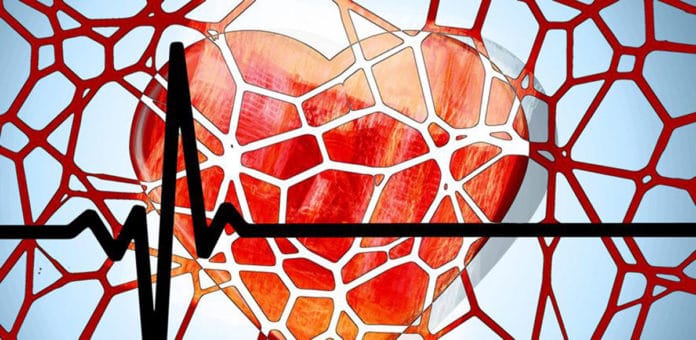Transplanting a region of damaged tissue with a combination of both heart muscle cells and healthy cells taken from the external layer of the heart wall could assist the organs to recover from the harm brought about by a heart attack, suggests a new study.
Scientists at the University of Cambridge, in collaboration with scientists at the University of Washington, used supportive epicardial cells developed from human stem cells to help transplanted heart cells live longer.
Using 3D human heart tissue grown in the lab from human stem cells, they tested the cell combination and found that the supportive epicardial cells helped heart muscle cells to grow and mature. Doing this could also improve the heart muscle cell’s ability to contract and relax.
During the experiment on rats, scientists found that the combination allowed the transplanted cells to survive and restore lost heart muscle and blood vessel cells.
According to scientists, this is a ray of hope for understanding how supportive epicardial cells help to drive heart regeneration.
They noted, “Understanding these key subtleties will bring them one bit nearer to testing regenerative heart treatments in clinical preliminaries.”
People suffering from heart failure can’t regenerate their damaged hearts, and the only cure is a heart transplant. Ultimately, these researchers hope that, by harnessing the regenerative power of stem cells, they will one day be able to heal human hearts using a patient’s cells.
Dr. Sanjay Sinha, a BHF-funded researcher, and leader of the study at the University of Cambridge said: “There are hundreds of thousands of people in the UK living with heart failure – many are in a race against time for a life-saving heart transplant. But with only around 200 heart transplants performed each year in the UK, we must start finding alternative treatments.”
Dr. Johannes Bargehr, a first author of the study at the University of Cambridge, said: “Our research shows the huge potential of stem cells for one day becoming the first therapy for heart failure. Although we still have some way to go, we believe we’re one giant step closer, and that’s incredibly exciting.”
Professor Sir Nilesh Samani, Medical Director at the British Heart Foundation which part-funded the research, said: “Despite advances in medical treatments, survival rates for heart failure remain poor and life expectancy is worse than for many cancers. Breakthroughs are desperately needed to ease the devastation caused by this dreadful condition.
“When it comes to mending broken hearts, stem cells haven’t yet really lived up to their early promise. We hope that this latest research represents the turning of the tide in the use of these remarkable cells.”
The British Heart Foundation funded the study (BHF), Medical Research Council, and the National Institute for Health Research. The study is published in the journal Nature Biotechnology.
